Got an answer back from Cushing. Photos purchased from the website are e-mailed as 400 dpi Jpegs in a zipped file. If you need a higher resolution or another format, they'd be happy to rescan and put them on a CD.
Historic Photos of Bryan, College Station, and TAMU
53,346 Views |
371 Replies |
Last: 15 yr ago by fossil_ag
So how would that compare to what you see on the screen? It would be tough to spend $10 on something and not know what kind of quality print you would end up with.
Some of those old postcards look interesting.
Some of those old postcards look interesting.
Thanks for the info, dave99.
The photos posted here are 96 dpi, so you'll get four times the resolution buying the image. Most printers will handle 300 - 600 dpi. The 400 dpi should be plenty for a decent sized (8x10 and up possibly) print. You'll still have to deal with blemishes, but the scan will be of good quality.
I used to go into Cushing to look through old Aggieland yearbooks from time to time when I was at A&M. It's really cool inside there...one of A&M's best kept secrets.
I also started on a photo restoration of a panoramic photograph of the Shirley Hotel (on-campus hotel for A&M faculty back in the day) back in 2000. I never finished all three parts of the image, but here's the leftmost part. The original is posted above it for comparison.


[This message has been edited by AggiePhil (edited 2/20/2007 1:27p).]
I also started on a photo restoration of a panoramic photograph of the Shirley Hotel (on-campus hotel for A&M faculty back in the day) back in 2000. I never finished all three parts of the image, but here's the leftmost part. The original is posted above it for comparison.


[This message has been edited by AggiePhil (edited 2/20/2007 1:27p).]
nice job!
a few more pics:
Sbisa:
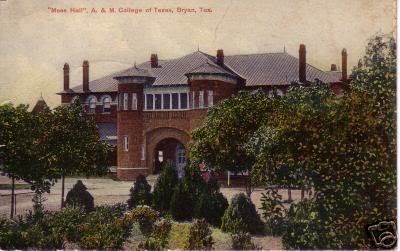
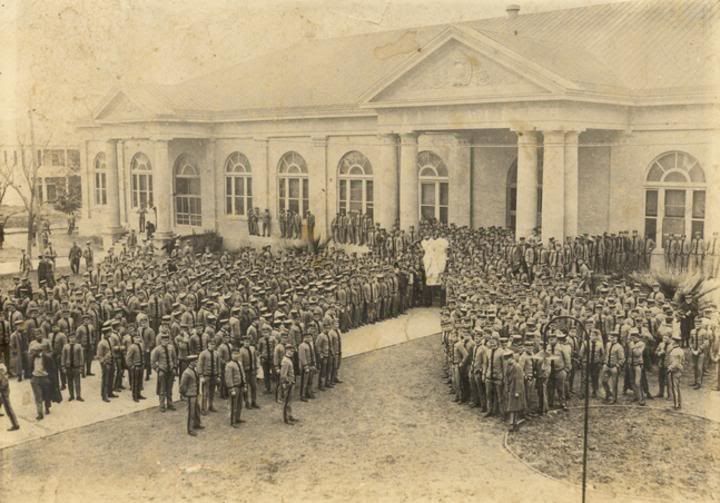
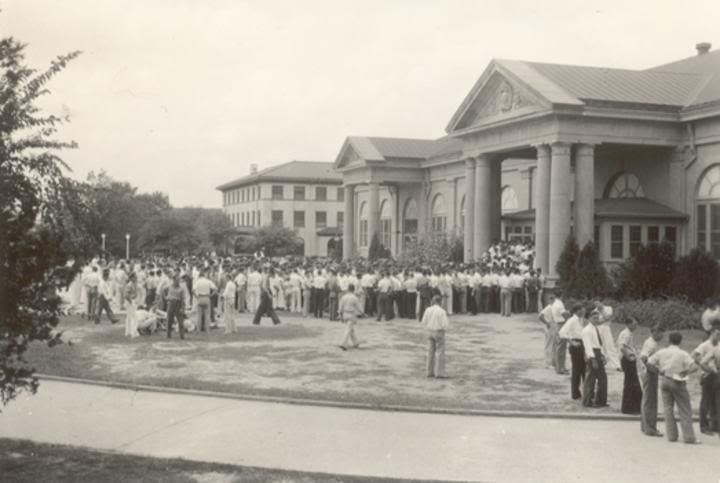
Dorm life at the turn of the century:
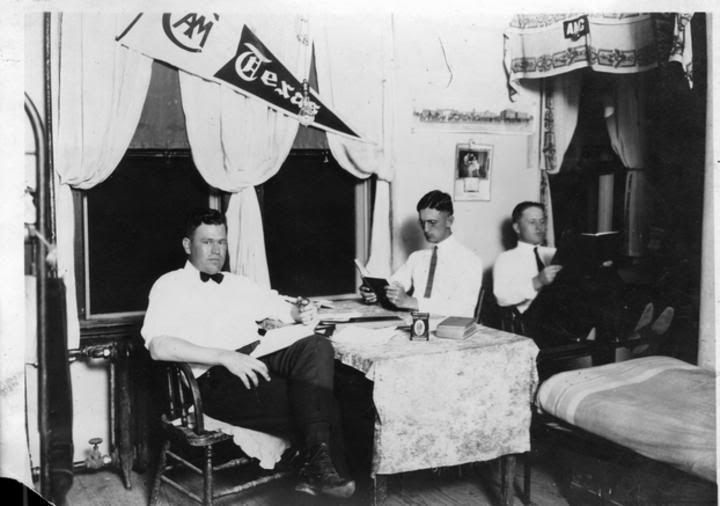

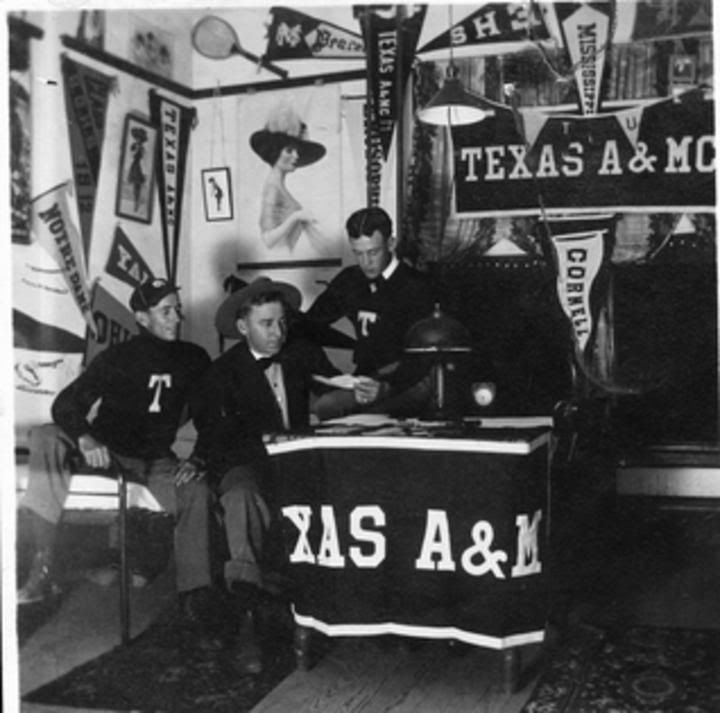

Misc. A&M activities:
football team: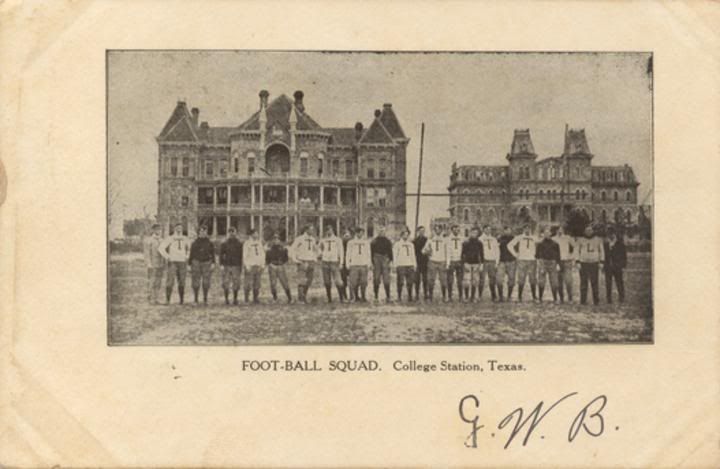
FTAB: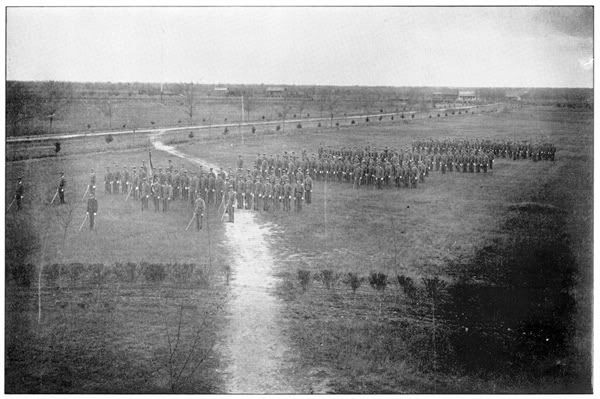
Judging Livestock:
Dancin':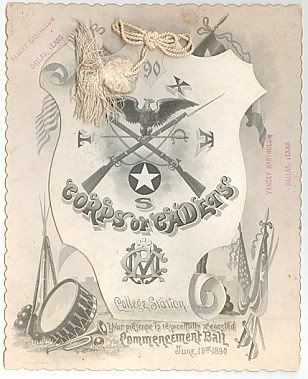
FDR: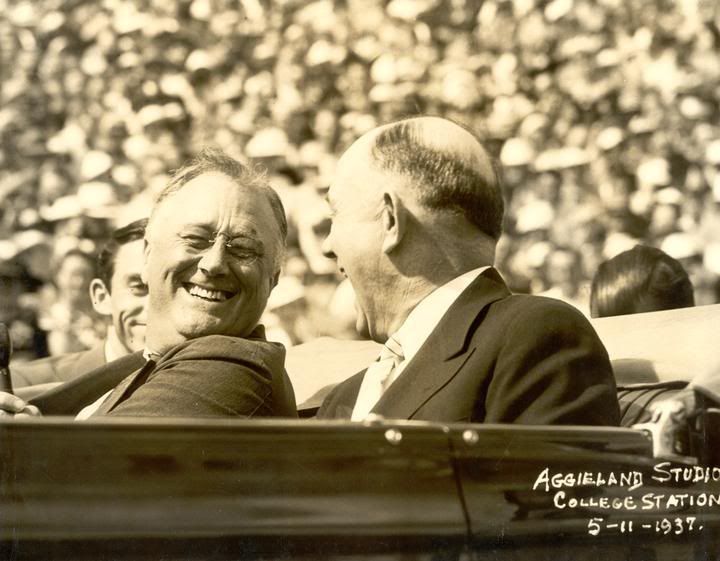
Drills: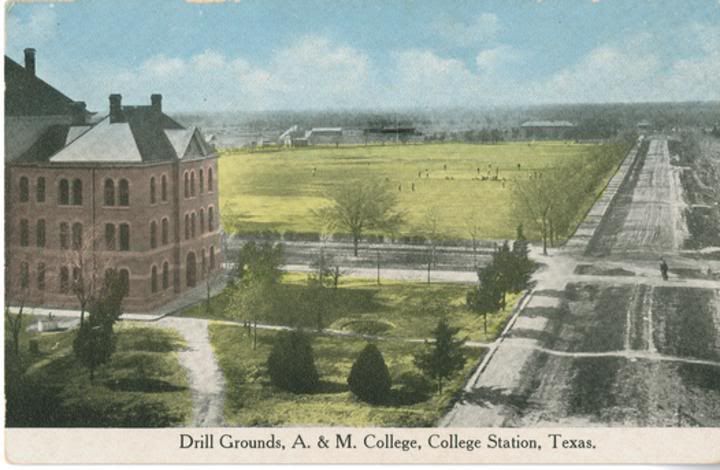
Downtown Bryan: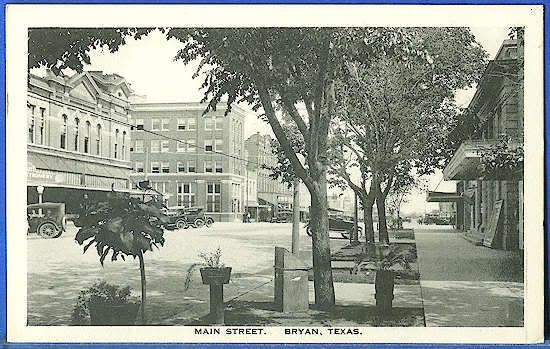
Brazos County Courthouse: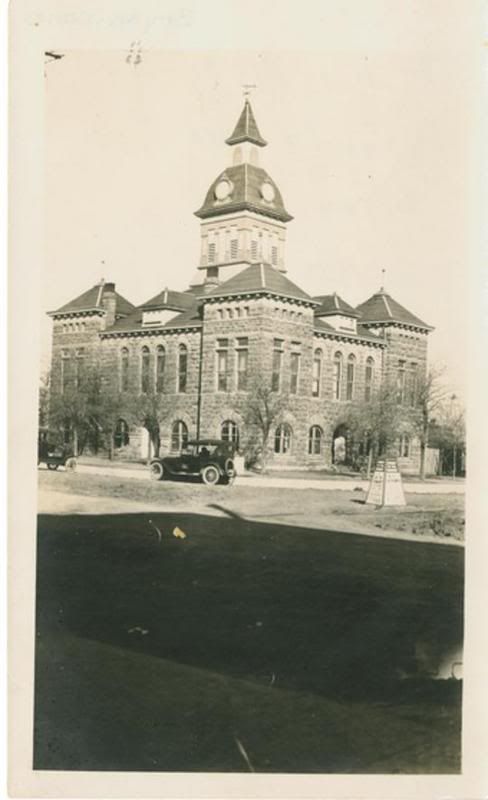
Sbisa:



Dorm life at the turn of the century:




Misc. A&M activities:
football team:

FTAB:

Judging Livestock:

Dancin':

FDR:

Drills:

Downtown Bryan:

Brazos County Courthouse:

warhymnAg ... The top picture in this collection names that building simply Mess Hall. Best I can tell it never had any other name. It is probably the least photographed and recognized of all the old buildings. It was built in 1897 and was destroyed in a fire in 1911. Best I can tell, Sbisa, built in 1912 was located at the same spot Mess Hall had occupied.
A great set of photos.
A great set of photos.
quote:
The O&M Building (1973) and the Langford Architecture Center (1978) were the ugliest buildings ever constructed on main campus.
Gates held the same opinion... which is why two new buildings are going up on either side of the Administration Building... to at least partially block them from view as you come up New Main.
WOW! These are great photos!I tried to post one the other night of my great-grandfather standing on top of an A&M building, ca. 1915. He was a travelling seed salesman. Never went to A&M. But I need help on posting.
LWInk2
LWInk2
quote:
fossil, do you have a recollection of a place called Arnold's? My dad came to A&M for grad school in the late-1950's, flunked chemistry, and never came back. When I was at A&M in the 80's he asked me a couple of times if Arnold's was still aorund. I told him i had no clue what he was talking about. From the osund of it, it was on Northgate somewhere, perhaps near the circle.
Archie's, perhaps?
RE: Arnold's, my dad saved a brick from that old place. It sits wrapped in the brown butcher paper they served the BBQ on: a slab of brisket, a hunk of yellow cheese, a slice of onion and dill pickle. REAL BBQ!
RE: The Circle, knew it well. OUr parents dressed us in our jammmies so we could play on the swing sets and merry-go-rounds under the screen, then fall asleep in the back seat of the car while they sat outside in lawn chairs. A mosquito coil burned on the dashboard. The popcorn always had that burnt taste. Old Mr. Schulman (who owned most of the theaters) is alive and well in Crockett. Check out his website some time. The Campus Theater (Shadow Canyon) had a cry room. The Palace and Queen were segregated for years, blacks sat upstairs in the balcony. Anybody remember the Handy Burger? We have great interior shots of it on Project HOLD.
Have you all tried making a PDF from some of the online photos and then doing a "camera capture"? HOw's the resolution on something like that? On Project HOLD, we scan in at 300dpi and archive only TIFs.
LWInk2
RE: The Circle, knew it well. OUr parents dressed us in our jammmies so we could play on the swing sets and merry-go-rounds under the screen, then fall asleep in the back seat of the car while they sat outside in lawn chairs. A mosquito coil burned on the dashboard. The popcorn always had that burnt taste. Old Mr. Schulman (who owned most of the theaters) is alive and well in Crockett. Check out his website some time. The Campus Theater (Shadow Canyon) had a cry room. The Palace and Queen were segregated for years, blacks sat upstairs in the balcony. Anybody remember the Handy Burger? We have great interior shots of it on Project HOLD.
Have you all tried making a PDF from some of the online photos and then doing a "camera capture"? HOw's the resolution on something like that? On Project HOLD, we scan in at 300dpi and archive only TIFs.
LWInk2
i spy Prince Albert in a can.
What i would give for those old banners and pennants.
What i would give for those old banners and pennants.
LWink2, you need to contact me...
jkoenig@tamu.edu
jkoenig@tamu.edu
GOD BLESS IT! This is about the neatest damn thread on here! I love it.
About 8 photos down in this series is the Football Squad standing in front of an old building. That building is Ross Hall, built 1892, razed in 1954. Old Main is the building in the right side of the picture, built 1875 and destroyed by fire 1911. Military Walk would later be built in front of Ross and Main to connect Sbisa (1912) and Guion Hall (1918.) The first football game was played in 1894 against Ball High of Galveston (Ags won 14-6.)
The football squad is standing where the YMCA would be built in 1914. I date this photo close to 1895.
The football squad is standing where the YMCA would be built in 1914. I date this photo close to 1895.
About 10 photos in the series is Students Judging Livestock in front of an old building. That building, built 1900 and razed in 1963, was originally the Agriculture/Horticulture Building, later called Science Hall through the 50s, and later years the Oceanography Building. It was located just south of where Cushing/Evans Libraries are now located in line with the AH Pavilion.
In the photo entitled Drill Grounds - A&M College the old building on the left side is old Foster Hall, built 1899 and razed 1951. The photo was taken from the Academic Building which was located just behind and a little to the north of Foster. The chimneys were removed from Foster in later years so I would suspect this photo was taken before 1940s or so.
Found this wider shot of FDR at Kyle:


Regarding the picture of downtown Bryan above: would that be (the modern) Parker Astin hardware on the left with the overhang?

Written on back:
"This sheet was clipped from a publicity picture put out by students in 1916. Showing the activities of various departments of the A&M College of Texas in 1916.
These pictures were taken during Laborartory Practice in Field Practice Courses."
Dave99Ag .... The Field Demonstrations pictured in your photos above would have taken place in the field in the upper right of the aerial view below. At the top of the built up portion of the campus, just to the left of the watertower is the old college livestock barn. The stables for the college's Cavalry was located there also. Those fields (now the Golf Course and on the left the Polo Fields) were not only for demonstrations but also is every day use producing feeds for the college's livestock.


Fossil-any idea where the first Dairy Queen was located in CS? The Delux Burger place (now closed) there at Northgate looks like it may have been? I remember spending many a summer day as a kid back in the late sixties running around on campus. MSC was our fav spot. Bowling in the basement and an old gun collection we'd oogle at. CS has really grown..
=====================
http://www.ntcf.org/start.html
=====================
http://www.ntcf.org/start.html
What is where the old Hospital Building was? I remember it still being there sometime around 1994 but it's gone now.
AggiePhil
If you mean the old Hospital Building that stood just north of Haas Hall, there is nothing there now other than a small grassy area.
If you mean the old Hospital Building that stood just north of Haas Hall, there is nothing there now other than a small grassy area.
wow ... interesting to see that major intersection of Univ Dr. and Wellborn Rd (and that little hump over the RR tracks.)
AggiePhil ... The old hospital does stand out in that view. It was built in 1916 and remained in service until Beutel was built in 1973. At some point it picked up the name of Special Services Building.
But that was not the first hospital. An Infirmary was built in 1895 and was continued in some sort of use until 1932. I have not been able to locate that building in any of the aerial views of the period ... perhaps it will show up in some photo submitted to this thread. (I am thinking that because of the fear of communicable disease such as Yellow and Typhoid Fever during the period it made sense to locate the Infirmary a distance from the core of the campus. Have you seen this building?

But that was not the first hospital. An Infirmary was built in 1895 and was continued in some sort of use until 1932. I have not been able to locate that building in any of the aerial views of the period ... perhaps it will show up in some photo submitted to this thread. (I am thinking that because of the fear of communicable disease such as Yellow and Typhoid Fever during the period it made sense to locate the Infirmary a distance from the core of the campus. Have you seen this building?

The Accounting Dept (College of Business) was located in the Old Hospital before Blocker opened.
It was used as a storage area by Res Life until it became structurally unsafe and was demolished a few years ago.
It was used as a storage area by Res Life until it became structurally unsafe and was demolished a few years ago.
This is an interesting building you rarely see a picture of ... It was the Chemical and Veterinary Building (sometimes called Chemistry and Vet Bldg.) It was built in 1902 and torn down in 1929.
The photo was shot from the top of the Academic Building sometime after it was built in 1912-14. Do you get the picture? The Chem and Vet Building occupied real estate where architect F. E. Giesecke wanted to build his Cushing Memorial Library in 1930.
In addition, the Livestock Barn occupied the space where Dr. Giesecke wanted his System Administration Building to be constructed in 1932-34. In that same 32-34 period Giesecke would fill in the gaps on either side of this view with his Animal Industries Building, Scoates Hall and Mark Francis Hall ... all Giesecke designed buildings in his own classical style (it is a shame Giesecke's students through that period did not learn a darn thing about architectual style.)
(The AH Pavilion was built in 1917.)

[This message has been edited by fossil_ag (edited 2/21/2007 3:00p).]
The photo was shot from the top of the Academic Building sometime after it was built in 1912-14. Do you get the picture? The Chem and Vet Building occupied real estate where architect F. E. Giesecke wanted to build his Cushing Memorial Library in 1930.
In addition, the Livestock Barn occupied the space where Dr. Giesecke wanted his System Administration Building to be constructed in 1932-34. In that same 32-34 period Giesecke would fill in the gaps on either side of this view with his Animal Industries Building, Scoates Hall and Mark Francis Hall ... all Giesecke designed buildings in his own classical style (it is a shame Giesecke's students through that period did not learn a darn thing about architectual style.)
(The AH Pavilion was built in 1917.)

[This message has been edited by fossil_ag (edited 2/21/2007 3:00p).]
In war hymn aggie's fifth picture, there is a tu pennant on the wall, along with many others. 2%ers...
Listen up, Ags. This is a story about A&M College in its finest hour. It is in great part about men who became known as the Greatest Generation. The aerial view below was taken in about 1935. Look at the small buildings in the lower right corner of the pic, to the west and north of Kyle Field. Those are the CoOp houses.

The time was the summer of 1932, deep in the Great Depression, mixed in with the days of the Dust Bowl. Today it is hard to believe such a time existed in Texas, and the entire US, when the majority of the population had no money and there were virtually no jobs available to make money. Times were heartbreakingly desperate.
At the little town of Moody in McLennan County, (west of Waco), some high school boys were discussing their dim prospects of going to college at A&M. They knew their families could not afford for them to live so far from home with little money for room and board. Someone suggested they live together and share expenses ... and this led somehow to them making contact with Dr. Dan Russell of A&Ms Rural Sociology Department. Dr. Dan was the Man.
When I knew Dr. Russell in the 50s few people were aware that he was a native Chicagoan, former Chicago policeman, PhD from the University of Chicago ... but somehow had found his way to Texas A&M and was a legend in Texas for rural life enrichment ... he was the early proponent of Co-Ops of all kinds and particularly in agricultural regions. And one of the finest persons I ever met.
Dr. Dan took the boys' proposal, ran it by the faculty, gained his Department's sponsorship (as an experiment) and led the charge ... with the 12 Moody boys in tow.
The group found a vacant house (described as a haunted house) west of campus. It was 2-story, had been vacant a number of years, was dilapidated, had no sanitary accommodations and no plumbing ... but most important, it was for rent at a low rate. They made a deal with the landlord: he would furnish materials and the boys and fathers would make all repairs, dig a well and run pipe connections to the house. The County Agent from Washington County (Brenham), Cesar (Dutch) Hohn '12,(another famous Ag) paid the rent for the house. The house was named Moody House ... and it was the first of the cooperatives.
But that was for starters. Dr. Dan got busy finding other houses suitable for co-op living and rounding up sponsors to rent or purchase .. or to build new ones. In 1933 Co-Ops had grown to accommodate 133 students. Cities, counties, service clubs and even churches, from throughout the state joined in the program. The Rotary Club of Brenham built a house of its own for 20 students. The American Legion constructed a building for 84 students (this brick building in later years was headquarters for campus police ... torn down recently for construction of the John Hagler TAMU Foundation building.) In 1936 A&M spent $100,000 to build 14 houses on campus, each to hold 32 Co-Op students.
By 1938, 1,171 students (23% of the student population of A&M) were bedded down in 52 cooperative housing units. Because the units were spread out, Dr. Dan even arranged transportation for his charges. And the Rural Sociology Department dedicated its time to handle all arrangements, coordinate the entire project and take care of administration. The parents and friends of those students contributed whatever they could to support the effort.
Texas kids who had no other hope for a college education were given that opportunity ... thanks to the collaborative efforts of folks in their home towns, other friends of the college, and Dr. Dan Russell and his A&M Department. The success to the Texas A&M Co-Op program became the model for colleges throughout the nation.
In 1939 Dr. Russell had applications for 600 more students than he had the previous Fall.
But, I suppose one could say, for every silver lining there is a dark cloud ... and this black cloud came from an unexpected source.
Just before the Fall Semester, 1939, the A&M Board of Governors declared that all students enrolled at A&M must reside in school dormitories or in college owned co-ops located on campus ... until all campus facilities were full.
Reportedly, the Board made that decision with no conversation with campus administrators or those connected with the Co-Op program. The decision left possibly 1,000 or so students out in the cold ... because they could not afford the campus room and board expense. Plus all the sponsors of off-campus houses were left high and dry.
Legislators and sponsors of the program were furious and had meetings with the Board but to no avail. The Board refused to budge leading many to believe the order had come from the office of the Governor, W. Lee O'Daniel, (since he had appointed the Board.) Speculation as to the reason was that other towns trying to start up college were losing students to the A&M Co-Op opportunities instead of living at home and attending the local college ... such as Arlington, Tarleton, etc. Another reason was that construction was almost completed in the Fall of 1939 of 12 new dormitories and Duncan Dining Hall on the south side of the campus and the Board wanted to fill those as rapidly as possible when completed ... and the growing Co-Op program threatened that. Unfortunately, the Depression in rural Texas did not end in 1939 and hundreds of Texas kids could not afford to live in the new dormitories.
WWII and 1942 brought many military training courses to A&M and the excess housing was soon absorbed. After the war the on-campus Co-Op houses were converted to married student apartments and when that need diminished in the early 50s these were closed. And that ended the era of cooperative housing at Texas A&M.
But don't ever forget the name of Dr. Dan Russell or the contributions of the old Rural Sociology Department, for their stepping up in the darkest days and extending a helping hand to students in great need. Can you imagine the administration, faculty and staff of today's TAMU performing in such a manner?
There are many stories from the early days of Texas A&M like the ones above. Too many have been lost in the passage of time. It would be worthwhile if someone would collect these in a single volume and make it required reading for each new administrator and faculty member ... so they are aware of the heart and soul put into Texas A&M by their predecessors.
Edit: Not only did Dr. Russell's student Co-Ops help a number of students attend Texas A&M who did not have a chance otherwise, it might be said that his program helped keep the doors of A&M open during the darkest days of the Depression. (Note the increase in enrollment and graduation numbers beginning in 1935.)
Years Enrollment Degrees
1929-30 3,226 303
1930-31 3,068 325
1931-32 2,956 329
1932-33 2,719 336
1933-34 2.922 349
1934-35 3,898 355
1935-36 4,335 394
1936-37 5,136 468
1937-38 5,955 616
1938-39 6,613 708
1939-40 7,177 966
[This message has been edited by fossil_ag (edited 2/21/2007 4:38p).]

The time was the summer of 1932, deep in the Great Depression, mixed in with the days of the Dust Bowl. Today it is hard to believe such a time existed in Texas, and the entire US, when the majority of the population had no money and there were virtually no jobs available to make money. Times were heartbreakingly desperate.
At the little town of Moody in McLennan County, (west of Waco), some high school boys were discussing their dim prospects of going to college at A&M. They knew their families could not afford for them to live so far from home with little money for room and board. Someone suggested they live together and share expenses ... and this led somehow to them making contact with Dr. Dan Russell of A&Ms Rural Sociology Department. Dr. Dan was the Man.
When I knew Dr. Russell in the 50s few people were aware that he was a native Chicagoan, former Chicago policeman, PhD from the University of Chicago ... but somehow had found his way to Texas A&M and was a legend in Texas for rural life enrichment ... he was the early proponent of Co-Ops of all kinds and particularly in agricultural regions. And one of the finest persons I ever met.
Dr. Dan took the boys' proposal, ran it by the faculty, gained his Department's sponsorship (as an experiment) and led the charge ... with the 12 Moody boys in tow.
The group found a vacant house (described as a haunted house) west of campus. It was 2-story, had been vacant a number of years, was dilapidated, had no sanitary accommodations and no plumbing ... but most important, it was for rent at a low rate. They made a deal with the landlord: he would furnish materials and the boys and fathers would make all repairs, dig a well and run pipe connections to the house. The County Agent from Washington County (Brenham), Cesar (Dutch) Hohn '12,(another famous Ag) paid the rent for the house. The house was named Moody House ... and it was the first of the cooperatives.
But that was for starters. Dr. Dan got busy finding other houses suitable for co-op living and rounding up sponsors to rent or purchase .. or to build new ones. In 1933 Co-Ops had grown to accommodate 133 students. Cities, counties, service clubs and even churches, from throughout the state joined in the program. The Rotary Club of Brenham built a house of its own for 20 students. The American Legion constructed a building for 84 students (this brick building in later years was headquarters for campus police ... torn down recently for construction of the John Hagler TAMU Foundation building.) In 1936 A&M spent $100,000 to build 14 houses on campus, each to hold 32 Co-Op students.
By 1938, 1,171 students (23% of the student population of A&M) were bedded down in 52 cooperative housing units. Because the units were spread out, Dr. Dan even arranged transportation for his charges. And the Rural Sociology Department dedicated its time to handle all arrangements, coordinate the entire project and take care of administration. The parents and friends of those students contributed whatever they could to support the effort.
Texas kids who had no other hope for a college education were given that opportunity ... thanks to the collaborative efforts of folks in their home towns, other friends of the college, and Dr. Dan Russell and his A&M Department. The success to the Texas A&M Co-Op program became the model for colleges throughout the nation.
In 1939 Dr. Russell had applications for 600 more students than he had the previous Fall.
But, I suppose one could say, for every silver lining there is a dark cloud ... and this black cloud came from an unexpected source.
Just before the Fall Semester, 1939, the A&M Board of Governors declared that all students enrolled at A&M must reside in school dormitories or in college owned co-ops located on campus ... until all campus facilities were full.
Reportedly, the Board made that decision with no conversation with campus administrators or those connected with the Co-Op program. The decision left possibly 1,000 or so students out in the cold ... because they could not afford the campus room and board expense. Plus all the sponsors of off-campus houses were left high and dry.
Legislators and sponsors of the program were furious and had meetings with the Board but to no avail. The Board refused to budge leading many to believe the order had come from the office of the Governor, W. Lee O'Daniel, (since he had appointed the Board.) Speculation as to the reason was that other towns trying to start up college were losing students to the A&M Co-Op opportunities instead of living at home and attending the local college ... such as Arlington, Tarleton, etc. Another reason was that construction was almost completed in the Fall of 1939 of 12 new dormitories and Duncan Dining Hall on the south side of the campus and the Board wanted to fill those as rapidly as possible when completed ... and the growing Co-Op program threatened that. Unfortunately, the Depression in rural Texas did not end in 1939 and hundreds of Texas kids could not afford to live in the new dormitories.
WWII and 1942 brought many military training courses to A&M and the excess housing was soon absorbed. After the war the on-campus Co-Op houses were converted to married student apartments and when that need diminished in the early 50s these were closed. And that ended the era of cooperative housing at Texas A&M.
But don't ever forget the name of Dr. Dan Russell or the contributions of the old Rural Sociology Department, for their stepping up in the darkest days and extending a helping hand to students in great need. Can you imagine the administration, faculty and staff of today's TAMU performing in such a manner?
There are many stories from the early days of Texas A&M like the ones above. Too many have been lost in the passage of time. It would be worthwhile if someone would collect these in a single volume and make it required reading for each new administrator and faculty member ... so they are aware of the heart and soul put into Texas A&M by their predecessors.
Edit: Not only did Dr. Russell's student Co-Ops help a number of students attend Texas A&M who did not have a chance otherwise, it might be said that his program helped keep the doors of A&M open during the darkest days of the Depression. (Note the increase in enrollment and graduation numbers beginning in 1935.)
Years Enrollment Degrees
1929-30 3,226 303
1930-31 3,068 325
1931-32 2,956 329
1932-33 2,719 336
1933-34 2.922 349
1934-35 3,898 355
1935-36 4,335 394
1936-37 5,136 468
1937-38 5,955 616
1938-39 6,613 708
1939-40 7,177 966
[This message has been edited by fossil_ag (edited 2/21/2007 4:38p).]
quote:
This is an interesting building you rarely see a picture of ... It was the Chemical and Veterinary Building (sometimes called Chemistry and Vet Bldg.) It was built in 1902 and torn down in 1929.
The photo was shot from the top of the Academic Building sometime after it was built in 1912-14. Do you get the picture? The Chem and Vet Building occupied real estate where architect F. E. Giesecke wanted to build his Cushing Memorial Library in 1930.
There's a small stone marker in the grass betwixt the Academic Bldg. and Cushing that mentions the Chem & Vet Bldg. Has the date it was razed on it. I used to see it when cutting through there between classes.
Awesome. I love these threads.
I might have to start digging around the net again.
I was fortunate enough in college to be chosen to participate in repainting the Cushing Library Reading Room stenciled ceilings. Man, that was interesting and I got to associate my name with a little bit of Aggie history.

I might have to start digging around the net again.
I was fortunate enough in college to be chosen to participate in repainting the Cushing Library Reading Room stenciled ceilings. Man, that was interesting and I got to associate my name with a little bit of Aggie history.


HALBOUTY GEOSCIENCES BUILDING



